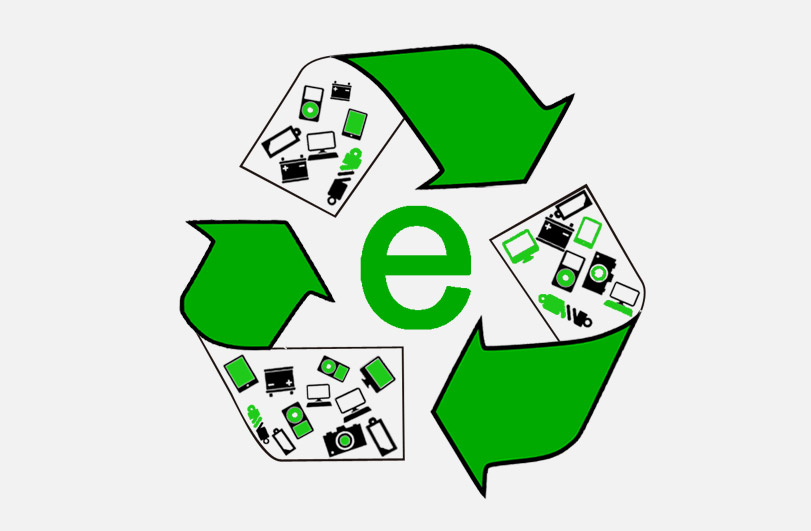In an era of rapid urbanisation, digitalisation, and population growth, the burgeoning problem of managing e-waste is a cross-cutting and persistent challenge. The Ministry of Environment and Forests notified a new set of e-waste rules in November 2022, which will go into effect on April 1, 2023. These rules address some critical issues while remaining silent on others.

What exactly is e-Waste?
- Electronic waste, also known as e-waste, includes any discarded electronic or electrical device, such as computers, mobile phones, televisions, and refrigerators.
- These devices contain hazardous substances such as lead, mercury, cadmium, and polyvinyl chloride (PVC) that, if not disposed of properly, can pose significant environmental and health risks.
Key Elements of India’s E-Waste Regulations
- EPR (Extended Producer Responsibility): The first set of e-waste Rules were announced in 2011 and took effect in 2012. The introduction of EPR was a key component of the Rules (2011). Producers are responsible for the safe disposal of electronic and electric products once the consumer has discarded them under EPR compliance.
- E-waste rules 2016, which were amended in 2018, were comprehensive and included provisions to promote authorisation and product stewardship. These rules also included new categories of stakeholders, such as Producer Responsibility Organizations (PRO).
- The new rules (2022) introduce a digitalized systems approach: Standardizing the e-waste value chain through a common digital portal can increase transparency and reduce the frequency of paper trading or false trail, which is the practise of falsely claiming 100% collection on paper while collecting and/or weighing scrap to meet targets.
E-waste recycling: Analysis
There are two critical stages to effective e-waste recycling:
1. Component recovery (adequate and efficient recoveries of rare earth metals in order to reduce dependence on virgin resources) and
2. Residual disposal (safe disposal of the leftover residual during e-waste recycling).
- Concern: The rules briefly mention the two aspects, but do not specify what is required to ensure the recovery tangent.
- PRO and dismantlers are no longer mentioned in the new notification: The entire burden of recycling falls on authorised recyclers; they must collect a certain amount of waste, recycle it, and generate digital certificates via the portal.
- Concern: New challenges may arise as companies are no longer required to work with PROs and dismantlers, who provided some double verification in terms of recycling quantity and quality.
- Lack of recognition for the informal sector: India’s new e-waste management rules fail to recognise the critical role played by the informal sector, which handles 95% of the country’s e-waste. This lack of recognition could be attributed to the sector’s “illegality.”
- Concern: This move may push e-waste management even deeper into the shadows, making it more difficult to monitor and regulate. This could result in environmental pollution, worker health risks, and inefficient e-waste management.
Health Effects
- Incineration and leaching: Open incineration and acid leeching, which are frequently used by informal workers, have a direct environmental impact and pose serious health risks, particularly to child and maternal health, fertility, the lungs, kidneys, and overall well-being.
- Occupational health hazards: In India, many unskilled workers from vulnerable and marginalised communities are unaware that what they call “black plastics” have far-reaching occupational health hazards, particularly when incinerated to extract copper and other precious metals for market value.
- Children’s Exposures: As described in an international forum on chemical treaties, the ‘tsunami of e-waste rolling out of the world’ poses several health hazards for women in this sector, as they are exposed to residual toxics elements mostly in their own households and frequently in the presence of children.
- Constant exposure to organic pollutants: Every year, a staggering 18 million children, some as young as five, work alongside their families at e-waste dumpsites in low- and middle-income countries, according to a recent WHO report. Heavy metals like lead, as well as persistent organic pollutants (POPs) like dioxins and flame retardants (PBDEs), have contributed to air, soil, and water pollution.
Way ahead
- The activities of the recyclers must be recorded in the system to ensure maximum efficiency.
- The authorities should track the amount of e-waste recycled versus the amount recovered at the end on a regular basis.
- Recognising the potential of informal sector in e- waste handling.
- For example, ‘Karo Sambhav,’ a PRO based in Delhi, has integrated informal aggregators into its collection mechanism. Through this initiative, e-waste is entered into a secure and structured system, and the informal sector gains financial and legal security.
- To ensure that the law is effectively implemented, stakeholders must have the necessary information and intent to safely dispose of e-waste.
- There is a need to strengthen reverse logistics, build stakeholder capacity, improve existing infrastructure, improve product design, rationalise input control, and implement green procurement practises.
- Customers can be picked up at their homes.
@the end
As the volume of e-waste generated continues to grow rapidly, e-waste recycling and management has become a major environmental challenge in the modern world. Concurrent efforts are required to raise awareness and improve infrastructure for effective e-waste management. Furthermore, a strong collection and recycling system is required to meet legal requirements.
Source: https://www.thehindu.com/opinion/op-ed/unpacking-the-new-set-of-e-waste-rules/article66560850.ece
